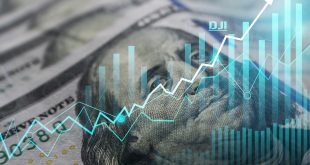With a new trading week, geopolitics could impact financial markets on two fronts, firstly; on the Chinese front, US President Biden is pondering an executive order to screen and restrict US overseas investment in technology development in China. The Chinese embassy in Washington said, Friday, that Beijing opposes the order, adding the measure would limit normal investment in China, disrupt international trade and distort global semiconductor supply chains.
On Russia’s front and more than any time before, Washington is determined to pursue efforts to impost price cap on Russian energy. US Treasury Secretary Janet Yellen, on Sunday, warned of fuel prices spike next winter when the EU cuts back on buying Russian oil, adding that a proposed Western price cap on Russia’s oil exports is in process to keep prices in check.
The price cap plan agreed by G7 calls for denying insurance, finance, brokering, navigation and other services to oil cargoes above a certain price cap on crude and oil products.
Market sentiment has played a key role in determining price action of several assets. Improved risk appetite, this week, witnessed the Dollar Index sliding from 109.83 on Monday to 109 on Friday versus the previous week’s close at 110.02 points.
Crypto Space
The crypto space is getting prepared, in one way or another, for a big event; namely the Ethereum’s merge that will take place after only 3 days, 5 hours and 10 mins at the time of writing. The event formerly known as Ethereum 2.0, when the proof-of-work Ethereum will merge with the proof-of-stake beacon chain, is expected as soon as Tuesday.
The new British government is widely seen as bullish on cryptos, while discussions in Washington are continuing about regulation. For the first time in several weeks amid a unfriendly crypto winter, Bitcoin and Ethereum had a great week’s trading. BTC/USD is hitting $21,730; versus September 2 when the most famous cryptocurrency closed at only $19974, namely it is hitting the most since August 26.
In addition, after being served some blows because of sanctions, Russia is turning to cryptocurrencies and Moscow country is seen as reevaluating its regulatory approach on cryptos as it moves towards legalizing digital currencies.
US, Asian and European Equities
Global equities benefited from positive economic data as well as remarks and comments by the world’s most important monetary policymakers, led by Fed Chair Jerome Powell. European stock markets opened with modest gains on Friday, tracking an extended recovery on Wall Street, ahead of a key EU meeting to discuss plans to face the continent’s energy crisis.
The New York Dow Jones, S&P 500 and Nasdaq Heavy Tech Industries indices gained about 2.7%, 3.7% and 4.00%, respectively.
US stocks steadily achieved weekly gains from September 5 – 9, as a result of several factors, most notably the intensive sale of oil futures. US Treasury yields’ declie also supported Wall Street stocks to reach the current rally.
Asian equities also enjoyed the ball as the US dollar index fell plunged on lower expectations for the US inflation rate, which will be released next week. On Friday; Japan’s Nikkei225 added 0.50%, China A50 jumped 1.56%, Hang Sang soared 2.56%, and Nifty50 gained 0.60%.
Dollar, Rival Currencies
The dollar fell to a more than one-week low on Friday, so, investors entrenched their gains after a sharp rise of most rival currencies, ahead of a key US inflation report that could guide the size of the Fed’s next rate hike in September. Ten-year U.S. Treasury yields also retreated from their highest levels since 2014.
The Euro and Canadian dollar rose by 0.9% and 0.1% respectively after the European Central Bank and the Bank of Canada raised interest rates by 75 basis points, signaling a general trend in central banks globally.
Ten-year U.S. Treasury yields fell from their highest levels since 2014, the result of selloff of this type of bond that led to purchases to cover losses, and then the value rose and yields fell due to an inverse correlation between them.
The GBP/USD pair rose to 1.1585 against last week’s close of 1.1509 recorded by the previous week’s close. The pair fell to a trading week low (September 05-09) at 1.1404 versus a high of 1.1648. The uncertainty that damaged the British currency’s price movement last week also disappeared after the death of Queen Elizabeth II.
Milestone Events
The trading week was full of significant events at the market level and at the level of countries in general, with the death of Queen Elizabeth II, threats from Russia to halt oil exports, a significant improvement in the performance of the service sector in the United States, and a 75-point rate hike by the Bank of Canada and across the Atlantic with the ECB taking the same decision.
The Fed released the Beige Book, which depicts a clear picture of the performance of economic activity in the United States based on a survey involving branches of the Fed and companies from various sectors.
The report contributed to Wednesday’s rise in the New York Stock Exchange, highlighting that economic activity is achieving growth rates ranging from fair to modest, suggesting that the Fed may slightly pause rate hikes and begin considering easing the pace of future hikes.
Gold, Commodities
Gold futures rose to $1716 an ounce against last week’s close of $1711 an ounce on the remarks of Jerome Powell denoting implicit references to the possibility of controlling inflation without violent monetary policy moves. The precious metal fell to its lowest level last trading week at $1691 per ounce earlier in September.
There is an inverse relationship between gold futures and the US currency, which suggests that the rise of one often justifies the fall of the other.
Gold gained around $5 an ounce at the close of last week’s trading in a boost from a fall in the U.S. dollar, which was negatively impacted by several factors related to the future course of the federal interest.
Some optimism is creeping back into the gold market as prices end the week in neutral territory, bouncing off support at $1,700 an ounce. However, analysts are warning investors that economic data next week needs to be significantly weaker than expected if that optimism blossoms in a new breakout on the upside.
The main focus for gold investors next week will be two inflation data points: the US CPI Index on Tuesday and the preliminary inflation expectations from the University of Michigan. Next week also will witness the release of August’s US retail sales, which will be an essential gauge to determine how consumers are holding up as the Fed aggressively raises interest rates.
Investors continue to absorb the new energy plan to address rising energy costs, although there are some doubts about how the law will be financed, as the UK struggles with rising inflation, widening trade deficits and the potential for recession.
On Wednesday, WTI crude oil prices held lower ground near $86.50, after posting the biggest fall in a week the previous day, as traders fear demand drawdown during Wednesday’s Asian session. In doing so, crude oil ignored the output cut decision by OPEC+. Despite Friday’s bounce, both crude benchmarks were headed for a weekly drop, with Brent down about 0.2% on the week after at one point hitting its lowest since January. WTI posted a weekly decline of 0.1%.
 Noor Trends News, Technical Analysis, Educational Tools and Recommendations
Noor Trends News, Technical Analysis, Educational Tools and Recommendations





